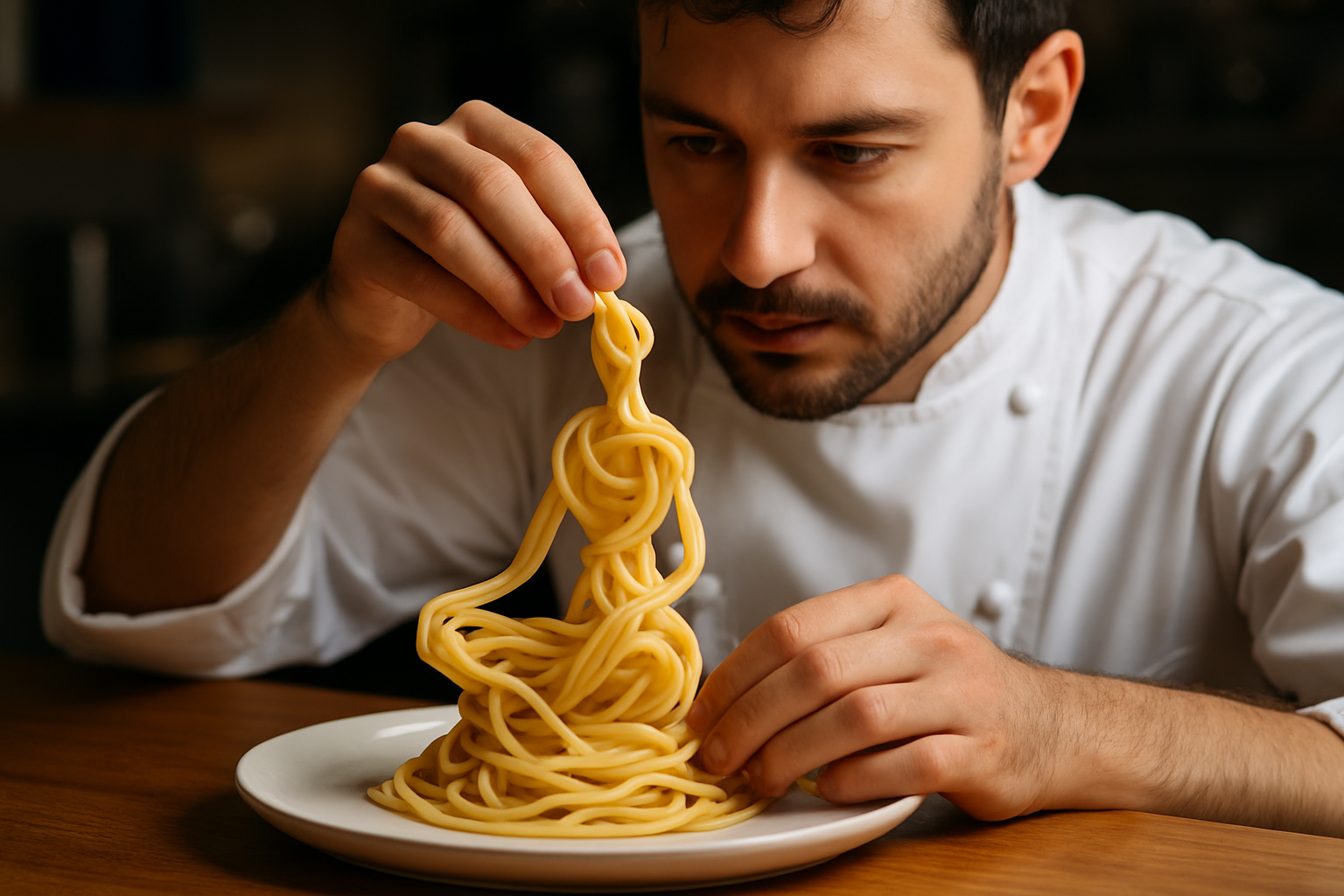Noodle Revolution: Slurping Through Global Pasta Innovations
Noodles are undergoing a renaissance, with chefs and food scientists pushing the boundaries of texture, flavor, and nutrition. From ancient traditions to cutting-edge culinary experiments, the humble noodle is being reinvented in exciting ways. Join us on a journey through the latest pasta innovations that are redefining our relationship with this beloved staple.

Chickpea pasta has emerged as a frontrunner in this category, offering a protein-packed option that closely mimics the texture of traditional wheat pasta. Its nutty flavor adds depth to dishes, making it a favorite among health-conscious foodies. Meanwhile, spiralized vegetable noodles, or “zoodles,” continue to gain popularity, with creative chefs finding ways to transform everything from beets to butternut squash into noodle-like strands.
Perhaps the most intriguing development in this space is the rise of seaweed noodles. These translucent, emerald-green strands not only offer a unique visual appeal but also pack a nutritional punch with high levels of iodine and antioxidants. As chefs experiment with these oceanic offerings, we’re seeing exciting fusion dishes that blend Asian and Western culinary traditions.
3D-Printed Pasta: Customization Meets Culinary Art
The world of 3D printing has finally made its way into the kitchen, and pasta is at the forefront of this technological revolution. This cutting-edge technique allows for the creation of intricate pasta shapes that were previously impossible to produce by hand or machine.
Imagine pasta that unfolds like a flower when cooked, or noodles that interlock to create a stunning architectural display on the plate. These aren’t just flights of fancy; they’re real innovations being developed by food technologists and designers. The possibilities for customization are endless, from personalized pasta shapes for special occasions to noodles designed to hold sauce in new and efficient ways.
Beyond aesthetics, 3D-printed pasta opens up new avenues for nutrition. By controlling the exact composition of the pasta dough, manufacturers can create noodles with precise nutritional profiles, incorporating everything from extra protein to specific vitamins and minerals. This technology could revolutionize how we approach dietary restrictions and personalized nutrition.
Fermentation Frenzy: Probiotic Pasta Takes Center Stage
As our understanding of gut health continues to evolve, fermented foods are taking center stage in the culinary world. Now, this trend has made its way to pasta, with innovative chefs and food scientists developing noodles that not only taste great but also offer probiotic benefits.
These fermented noodles are created using traditional techniques like lacto-fermentation, where beneficial bacteria are introduced to the dough before it’s shaped and dried. The result is a pasta with a subtle tangy flavor and a host of potential health benefits, including improved digestion and enhanced nutrient absorption.
Some artisanal pasta makers are even experimenting with wild fermentation, using naturally occurring yeasts and bacteria to create unique flavor profiles. These noodles offer a taste of terroir, much like sourdough bread, with each batch reflecting the microbial environment of its origin.
Color-Changing Noodles: A Feast for the Eyes
In a world where social media-worthy food presentations reign supreme, color-changing noodles are making a splash. These innovative pastas use natural ingredients that react to changes in pH, temperature, or light to create a stunning visual spectacle on the plate.
Imagine a bowl of pasta that shifts from deep purple to vibrant pink as you add a squeeze of lemon, or noodles that reveal hidden patterns when exposed to UV light. These creations are not just gimmicks; they’re a testament to the intersection of food science and culinary artistry.
Chefs are using ingredients like butterfly pea flower, which changes from blue to purple in acidic environments, or anthocyanin-rich vegetables that shift hues with temperature changes. These color-changing noodles are not only visually stunning but also offer an interactive dining experience that engages all the senses.
Ancient Grains, Modern Twists: Rediscovering Forgotten Flavors
As the food world continues to explore sustainable and nutritious alternatives, ancient grains are making a comeback in pasta form. These forgotten cereals, many of which have been cultivated for thousands of years, offer unique flavors, textures, and nutritional profiles that are captivating both chefs and health-conscious consumers.
Grains like einkorn, emmer, and spelt are being milled into flours and transformed into rustic, flavorful pastas that hearken back to traditional methods while catering to modern palates. These noodles often have a nuttier flavor and heartier texture than their conventional wheat counterparts, offering a new dimension to familiar pasta dishes.
Even more exotic options are emerging, such as pasta made from teff, an Ethiopian grain packed with protein and minerals, or quinoa pasta that offers a complete amino acid profile. These innovative noodles not only expand our culinary horizons but also promote biodiversity and support sustainable farming practices.
Noodle Know-How: Tips and Facts
• Cooking time for 3D-printed pasta can vary significantly from traditional shapes, so always check package instructions.
• Fermented noodles often have a lower glycemic index due to the fermentation process breaking down some of the starches.
• When working with color-changing noodles, use clear or white sauces to showcase the transformative effect.
• Ancient grain pastas typically have a lower gluten content, making them easier to digest for some individuals.
• To maximize the probiotic benefits of fermented pasta, avoid overcooking and pair with prebiotic-rich vegetables like garlic and onions.
As we slurp our way into the future, it’s clear that noodles are no longer just a simple staple. They’ve become a canvas for culinary innovation, a vehicle for nutrition, and a medium for artistic expression. From gluten-free alternatives to color-changing spectacles, the world of pasta is more diverse and exciting than ever before. As consumers, we’re not just passive observers in this noodle revolution; we’re active participants, shaping the future of food with every bite. So the next time you twirl your fork, remember: you’re not just eating pasta; you’re experiencing the cutting edge of culinary science and creativity.




